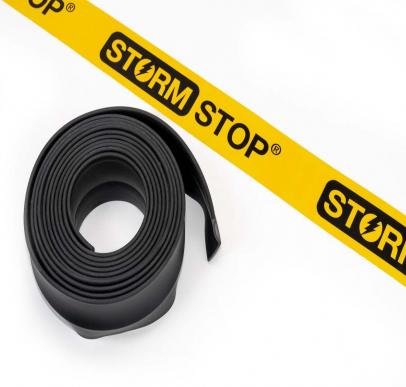 Trade Discounts Available
Trade Discounts Available
|
 Price Match Promise
Price Match Promise
|
 Secure Payments
Secure Payments
|
 World Wide Delivery
World Wide Delivery
|
 Over 20 Years Experience
Over 20 Years Experience
|
A properly fitted garage door gasket is essential for keeping your garage insulated, pest-free and protected from the elements. With various garage door gasket types available, choosing the right one can be daunting. Here's a guide to help you select the perfect garage door gasket for your needs,
Garage door gaskets, also known as garage door seals, or weatherstripping, effectively block draughts, prevent rainwater from entering underneath the door and keep pests out. These seals come in different types to suit various garage doors and environments.
There are various gaskets to choose from when it comes to sealing your garage door. Garage door gaskets can be made from robust rubber or thick nylon bristles and can be positioned on different areas of the garage door to create an effective seal. Gaps in garage doors are usually found along the top, down the sides and at the bottom of the garage door and these locations will indicate which type of seal you need.
A garage door bottom seal is a thick, durable rubber blade that can be installed at the bottom of the garage door. This type of garage door lower seal is very effective at closing gaps under the garage door. A garage door brush strip is a bristled alternative to the rubber blade seal. As the garage door closes, the bristles brush against the floor, effectively blocking dust, dirt, and even small insects from entering.
A rubber floor seal is another type of garage door seal that is applied to the floor to close gaps at the bottom of the door. Also known as a threshold seal, it is installed on the garage floor and works well for extreme weather protection.
A garage door side gasket is not only an effective solution to closing gaps at the sides of the garage door, but it can also work brilliantly at sealing the top of the garage door. Also called garage door multi-seals, these are the perfect all-in-one solution for gaps in multiple places. Easy to install, this type of garage door gasket is supplied with strong double-sided tape so it can be fixed around the door frame, sealing gaps along the top and sides.

When it comes to replacing garage door gaskets, the easiest way to find out which one you need is to see what type of seal is currently in place. Knowing whether you want to seal out draughts, or prevent water from entering the garage is another factor to help you choose the right seal. Additionally, the location of the gap in the garage door will indicate whether you need a seal for the sides, top or bottom of the garage door.
Now that you're familiar with the different types of garage door gaskets available, let's explore some factors to consider when choosing the right one for your needs.
Gap size - The size of the gap between the bottom of your garage door and the floor will significantly influence your gasket selection. A multi seal can adequately fill smaller gaps but if the gaps are larger than 25mm, a brush strip or rubber blade seal will do the trick as they are available in a range of sizes including 40m and 50mm tall. For gaps under the garage door, our threshold seals are available in various heights from 15mm to 30mm.
Climate - If you live in a region with harsh winters and scorching summers, our rubber blade seals are made from TPE which has excellent weather resistance and durability. For areas with lots of rainfall, our rubber floor seals also offer superior environmental resistance and can prevent water ingress.
If it’s time to replace your garage door seals, we can help. Browse our selection of top quality garage door gaskets to find the right one to suit your needs. If you have any questions or need more information, contact our team for assistance.